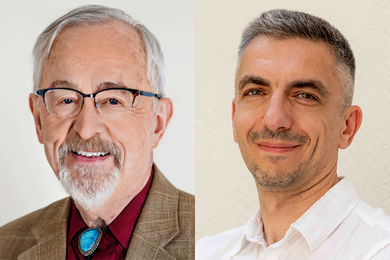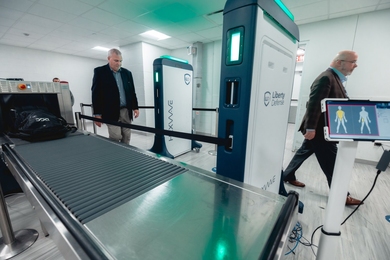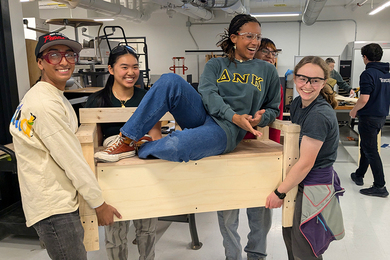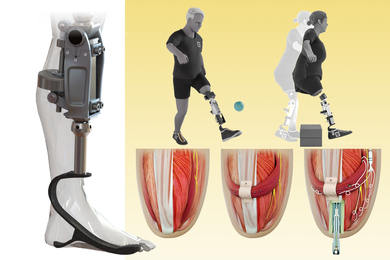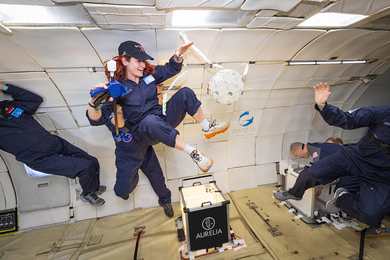Michael Kaiser, known as the "turnaround artist" who led the revitalization of the Kennedy Center for the Performing Arts, gave a capacity crowd some insight into his business practices at a talk held Thursday, Nov. 3, in Room E51-345.
"You can't just address costs. You must address revenue," said Kaiser, a 1977 graduate of MIT Sloan School of Management. Kaiser was the final fall speaker in the Dean's Innovative Leader Series.
Introduced by William Pounds, former MIT Sloan dean from 1966 to 1980, Kaiser opted for an interview format; students took turns with Pounds asking questions.
Kaiser, who has spent the last 20 years of his career turning around arts organizations, is one of the best-known arts administrators in the world. He has worked for the Royal Opera House in London, the American Ballet Theatre, the Alvin Ailey Dance Theatre Foundation and the Kansas City Ballet, to name just a few. He is currently the president of the John F. Kennedy Center for the Performing Arts in Washington, D.C.
The Kennedy Center was not in a financial crisis when Kaiser arrived there, so instead he looked into making it the national center for the arts. He wanted to turn the Kennedy Center into a "destination," and one of the first things he did to achieve that goal was to create artistic and educational programs.
The key to success in turning around an arts center is similar to that of turning around a business, Kaiser said. "If you have a good product, that will help turn things around. All the techniques I learned here [at MIT Sloan] can transfer to the business world. But success is the hardest thing to measure in the nonprofit world."
Kaiser admitted that it took him nearly eight months to land the job at the Royal Opera House in London, saying he was "the only dope who wanted the job." The tabloids in London were not kind to him … at first anyway. In just two years, he was able to erase a $30 million deficit, raise enough money to complete renovations to the Opera House, and create a $30 million dollar endowment.
He began by addressing the programming that was offered by the Opera House and working to create a social life around the organization. The Opera House developed events that people wanted to go to, and not only did he have people buy tickets, but he had them donate at the same time. "You can scrimp on everything but what goes on stage," said Kaiser. "Most people would cut back on the art or on marketing and those are the two things that produce revenue. So I didn't cut back on those. It would have made the situation worse. The more programs you have the more marketing you need and the more money you will make. It's the same for any nonprofit."
Although he did not cut the programming function of the Opera House, he did cut staff. In his first week, he laid off 300 of the 1,100 employees, noting that it was one of the hardest things he has ever had to do. After two years in London he had completed his turnaround mission and today the Opera House is still running strong.
Kaiser finished his talk by admitting that he got into the arts because he had once aspired to be an opera singer. He told students to find something that they like, that they have a passion for, and to pursue that for a career. "You have to like the product that you are going to work with," he said. "Like others, I found that art is more interesting as a product than money."
A version of this article appeared in MIT Tech Talk on November 16, 2005 (download PDF).

